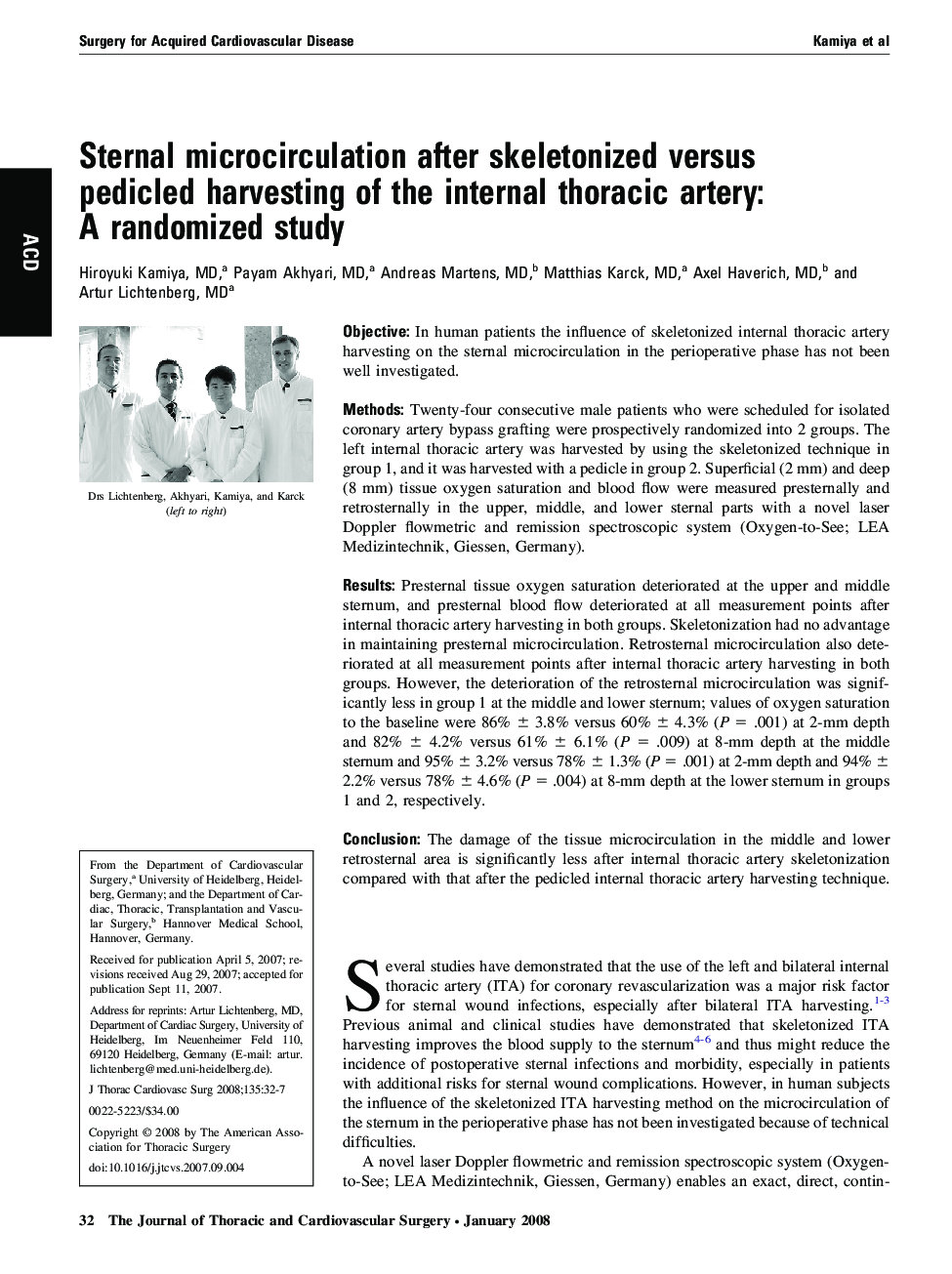| Article ID | Journal | Published Year | Pages | File Type |
|---|---|---|---|---|
| 2983914 | The Journal of Thoracic and Cardiovascular Surgery | 2008 | 6 Pages |
ObjectiveIn human patients the influence of skeletonized internal thoracic artery harvesting on the sternal microcirculation in the perioperative phase has not been well investigated.MethodsTwenty-four consecutive male patients who were scheduled for isolated coronary artery bypass grafting were prospectively randomized into 2 groups. The left internal thoracic artery was harvested by using the skeletonized technique in group 1, and it was harvested with a pedicle in group 2. Superficial (2 mm) and deep (8 mm) tissue oxygen saturation and blood flow were measured presternally and retrosternally in the upper, middle, and lower sternal parts with a novel laser Doppler flowmetric and remission spectroscopic system (Oxygen-to-See; LEA Medizintechnik, Giessen, Germany).ResultsPresternal tissue oxygen saturation deteriorated at the upper and middle sternum, and presternal blood flow deteriorated at all measurement points after internal thoracic artery harvesting in both groups. Skeletonization had no advantage in maintaining presternal microcirculation. Retrosternal microcirculation also deteriorated at all measurement points after internal thoracic artery harvesting in both groups. However, the deterioration of the retrosternal microcirculation was significantly less in group 1 at the middle and lower sternum; values of oxygen saturation to the baseline were 86% ± 3.8% versus 60% ± 4.3% (P = .001) at 2-mm depth and 82% ± 4.2% versus 61% ± 6.1% (P = .009) at 8-mm depth at the middle sternum and 95% ± 3.2% versus 78% ± 1.3% (P = .001) at 2-mm depth and 94% ± 2.2% versus 78% ± 4.6% (P = .004) at 8-mm depth at the lower sternum in groups 1 and 2, respectively.ConclusionThe damage of the tissue microcirculation in the middle and lower retrosternal area is significantly less after internal thoracic artery skeletonization compared with that after the pedicled internal thoracic artery harvesting technique.
